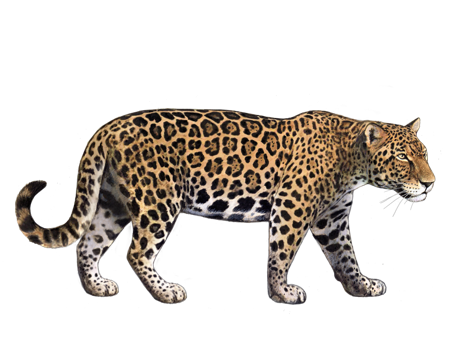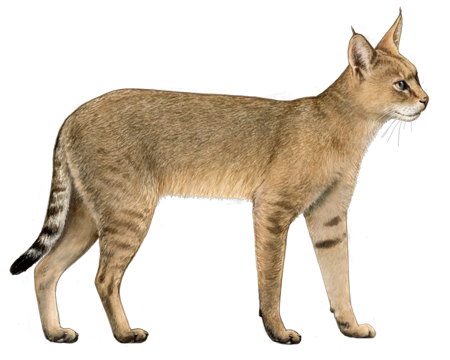
Asian Leopard Cat
Asian Leopard Cats are one of the most widespread carnivore species in Asia. They are known for their gorgeous spotted coats and their contributions to the Bengal cat breed.
Interested in discovering if your cat is an Asian Leopard Cat?
Check out Wisdom Panel's DNA test.
Asian Leopard Cat Traits
General Appearance
Asian Leopard Cats are similar in size to large domestic cats. But they vary widely in size and color based on their geographic region.
Coat and Coloring
Coat color for the Asian Leopard Cat can range from shades of yellow in southern populations to grey in northern regions. These cats have black rosettes on their sides and solid spots on their legs and tails. Four black stripes typically extend down the forehead to the nape. Their coat length varies according to their environment, with cats in the north having longer, thicker fur.
Distinctive Physical Traits
Other distinguishing characteristics of the Asian Leopard Cat include a small head, short narrow muzzle, long rounded ears, and golden-brown to greyish eyes.
Asian Leopard Cat Temperament
Asian Leopard Cats are mostly solitary, nocturnal animals—though males and females sometimes raise their young together. They primarily hunt at night and often spend their days resting in dens made in hollow trees.
These cats are proficient climbers and capable of swimming, though they prefer not to do the latter. If kept in captivity, they require large outdoor enclosures that allow them to roam freely.
Asian Leopard Cat History
The Asian Leopard Cat is the most common wild cat in Asia and has the most extensive geographic distribution of any feline. They inhabit areas in eastern Afghanistan, northern Pakistan, northern and coastal India, Myanmar, Laos, Thailand, Indonesia, Malaysia, Vietnam, Sumatra, Java, Bali, Borneo, Nepal, Korea, Cambodia, parts of the Philippines, Eastern China, and Taiwan, China.
These wild cats can live in various environments and elevations—including tropical forests, pine forests, jungles, mountainous regions, and semi-desert areas. They are typically unbothered by human activity and often live near villages, where locals sometimes rely on them for rodent control.
In 1963, breeder Jean S. Mill crossed domestic cats with the Asian Leopard cat to develop a new hybrid cat breed: the Bengal. Bengals are domesticated cats that people can keep as ordinary pets. Though Asian Leopard Cats are allowed as pets in some places, they require permits and are subject to strict regulations.
Other wild cats included in the Leopard Cat grouping are the Asian Golden Cat, Bay Cat, Black-footed Cat, Fishing Cat, Flat-headed Cat, Jungle Cat, and Pallas Cat. The Pallas cat inhabits cold, dry terrains in central Asia, while the others live in wetland habitats.
Asian Leopard Cat Care
Nutrition
The Asian Leopard Cat’s diet consists mainly of rodents. But they also eat plant matter and—given the opportunity—will feast on chickens from poultry farms.
Grooming
Asian Leopard Cats groom themselves to keep clean and remove their scent (which helps keep potential prey from detecting them while they lie in wait).
Health
Asian Leopard Cats are at risk for several domestic cat diseases, including Feline Immunodeficiency Virus. If kept in captivity, they need many of the same vaccines as modern pet cats. However, they require a veterinarian trained and licensed in exotic animal care.
Breed Group
Wild cat
The breeds and populations in this group are, as the name would imply, still considered wild and undomesticated. The Wild Cat Group incorporates the widest range of body sizes and natural habitats of all the breed groups.
Resources
https://www.wildcatfamily.com/leopard-cat-lineage/
https://wildcatconservation.org/wild-cats/asia/leopard-cat/
https://wildcatsmagazine.nl/wild-cats/asian-leopard-cat-prionailurus-bengalensis
https://pethelpful.com/exotic-pets/small-exotic-cats
Reviewed February 23, 2021 by Annette Louviere, DVM


















